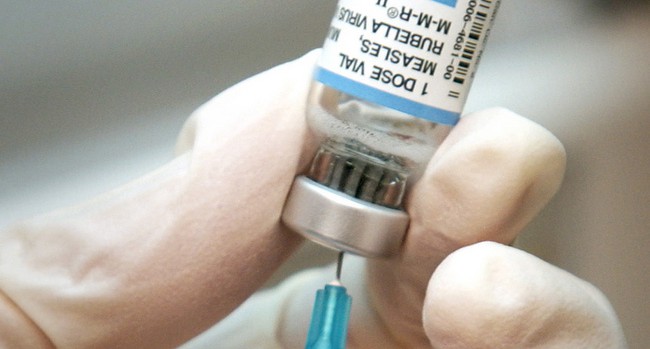
Smallpox was the first, in 1971. Then polio, in 1994. Now, for the third time, the Americas are the first region in the world to eliminate yet another disease through vaccines: rubella.
After 15 years of a widespread vaccination campaign with the MMR (measles-mumps-rubella) vaccine, the Pan American Health Organization and the World Health Organization announced yesterday that rubella no longer circulates in the Americas. The only way a person could catch it is if they are visiting another country or if it is imported into a North, Central or South American country.
With the recent resurgence of measles due to pockets of vaccine refusals throughout the U.S., the announcement serves as a much-needed reminder of the effectiveness of vaccines and the critical role they play in protecting the health of the population. And in the wake of yet another study showing no link between the MMR and autism spectrum disorders, there’s a certain irony to the fact that the only clearly established cause of autism – congenital rubella syndrome – is actually prevented by the MMR vaccine.
Rubella, also known as German measles, was previously among a pregnant woman’s greatest fears. Although it’s generally a mild disease in children and young adults, rubella wreaks havoc when a pregnant woman catches it because the virus can cross the placenta to the fetus, increasing the risk for congenital rubella syndrome.
Congenital rubella syndrome can cause miscarriage or stillbirth, but even the infants who survive are likely to have birth defects, heart problems, blindness, deafness, brain damage, bone and growth problems, intellectual disability or damage to the liver and spleen. Strikingly, past research has found that as many as one in 12 children born with congenital rubella syndrome developed autism in childhood.
The only way to prevent congenital rubella syndrome is for a pregnant woman to have immunity to the disease. The only way to develop that immunity – unless she has had rubella herself – is with the MMR vaccine, developed by Dr. Maurice Hilleman with the Merck team in 1969, just a few years after the last major rubella outbreak in the U.S.
The 1964-65 epidemic resulted in 11,000 miscarriages and stillbirths and 20,000 births with congenital rubella syndrome. Outside the U.S., as recently as 1997, more than 158,000 rubella cases were reported annually in Latin America and the Caribbean. An estimated 16,000 to 20,000 newborns were born with congenital rubella syndrome every year in those countries before widespread vaccination.
To achieve elimination, there must be no evidence of endemic transmission – an infected person in the country passing it on to another person – for at least three years in the defined geographical area(s). When the Expert Committee for Measles and Rubella Elimination in the Americas met last week, they concluded that no cases had occurred for five consecutive years. The last endemic case occurred in Argentina in 2009. The investigation required review of 165 million records and 1.3 million checks in communities, reported The New York Times.
While definitely a success, this milestone does not mean rubella is never a threat to babies born in the Americas. Across the world, an estimated 110,000 children continue to be born with severe birth defects from the disease, mostly in South East Asia and Africa. If a case is imported into an area of the U.S. with low immunization coverage, it could spark another outbreak here. In fact, that’s exactly what has happened with measles in the U.S. — although the disease was eliminated in 2002, it has been making a comeback in recent years thanks to a misguided anti-vaccination movement.
